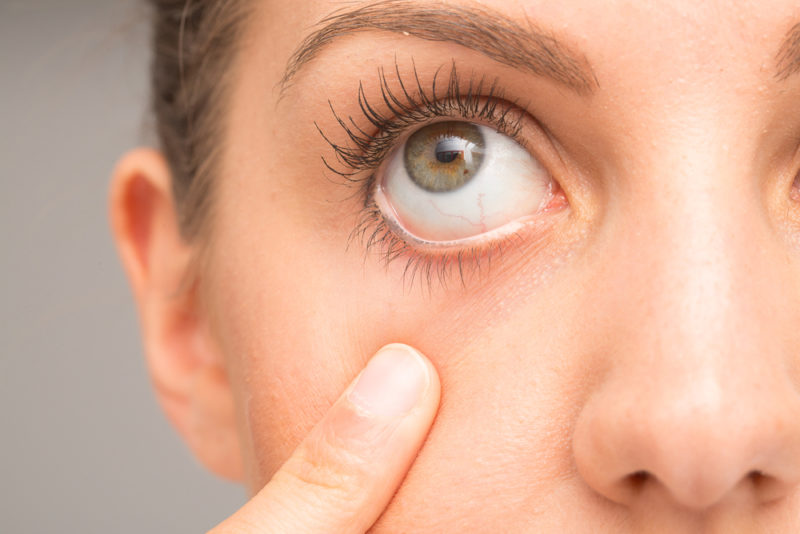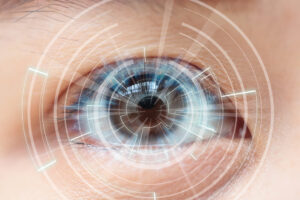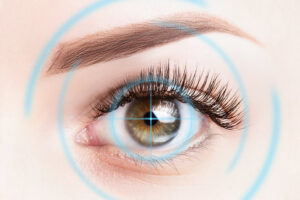
We’ve all seen the ads on TV: an impossibly good-looking eye doc saves the day for her patient with dry eyes. Even more, at least one of those attractive eye doctors uses the prescribed medication to treat their own eyes.
And while the doc’s treating a very specific dry eye problem — dry eye syndrome — medication of choice also eases one of its causes, meibomian gland dysfunction.
What Is a Meibomian Gland?
Meibomian glands lie just over and under the eyelashes. Each eye has 20 to 30 of these glands on the lower eyelid and 40 to 50 on the upper lid. They secrete meibum, an oily substance that keeps the eye surface clean and lubricated.
Each time we blink, we spread meibum over the eye. It mixes with tears to enhance refraction on the eye surface to maintain consistent visual input to the brain.
Meibomian Gland Dysfunction Is a Type of Meibomian Gland Disease
Meibomian gland disease is defined as a broad range of disorders that affect meibomian glands, including meibomian gland dysfunction. Other types of meibomian gland diseases include neoplasia (uncontrolled cell growth) and congenital eye diseases.
Meibomian gland dysfunction occurs when the glands are blocked or develop some kind of abnormality that prevent them from creating and discharging meibum. This diminishes tear quality and quantity, causing symptoms similar to dry eye syndrome: eyes that feel dry or gritty, itchy, and blurred vision.
It can also cause blepharitis, where the eyelids become red and sore, leaving crust on the eyelashes. Blepharitis is also caused by bacteria inside the eyelid, which can make problems in the meibomian glands.
Meibomian gland dysfunction is diagnosed with tools that measure the amount of force needed for the glands to push out the oils, and how quickly tears lose stability and break upon the eye.
Meibomian Gland Dysfunction Is a Common Eye Problem
Meibomian gland dysfunction is pretty common. Most researchers think it’s caused by bacteria, either started in the glands or spread from other parts of the eye. It’s a kind of bacterial conundrum. It’s also been noted in patients with skin conditions like rosacea and seborrheic dermatitis.
Here are some other contributing risk factors:
- Wearing contact lenses. Contact lenses may disturb the glands’ functioning. In addition, poor handling can introduce bacteria to the eyelids that lead to meibomian gland problems.
- Wearing eye makeup. Eye makeup can be a killer on these delicate glands. They can easily be clogged by eyeliner and mascara, particularly if the products are more than a few months old and are more likely to have been exposed to bacteria. Improper or incomplete makeup removal is another risk factor.
- Age. Everything begins to dry up after 40, including meibomian glands.
- Asian ethnicity. Researchers have discovered that nearly 70% of people from Thailand, Japan, and China have had meibomian gland problems compared to perhaps 20% of Caucasians in Australia and the U.S.
Eye Drops Heal Most Meibomian Gland Problems
Those doctors/actors in the TV commercials aren’t lying: certain eye drops formulated for dry eye work on meibomian gland dysfunction as well, even if they can’t actually advertise this until they prove its effectiveness to the FDA.
Contact Us
If you have more questions about LASIK procedures, get in touch with us.
Related Blogs

Timing is Everything: When to Consider LASIK After Nursing for Optimal Results
Timing is everything when considering LASIK eye surgery after nursing, and understanding the optimal period for this procedure is vital for both mother and baby.

Cataract Surgery: Restoring Clarity and Confidence
Cataract surgery is a transformative procedure that offers a new lease on clear vision and renewed confidence. As cataracts cloud the eye’s lens, causing blurred

Intralase LASIK Explained: What to Expect Before, During, and After the Procedure
Intralase LASIK is a cutting-edge procedure that offers a safe, effective, and precise way to enhance vision compared to traditional LASIK methods. Understanding what to
